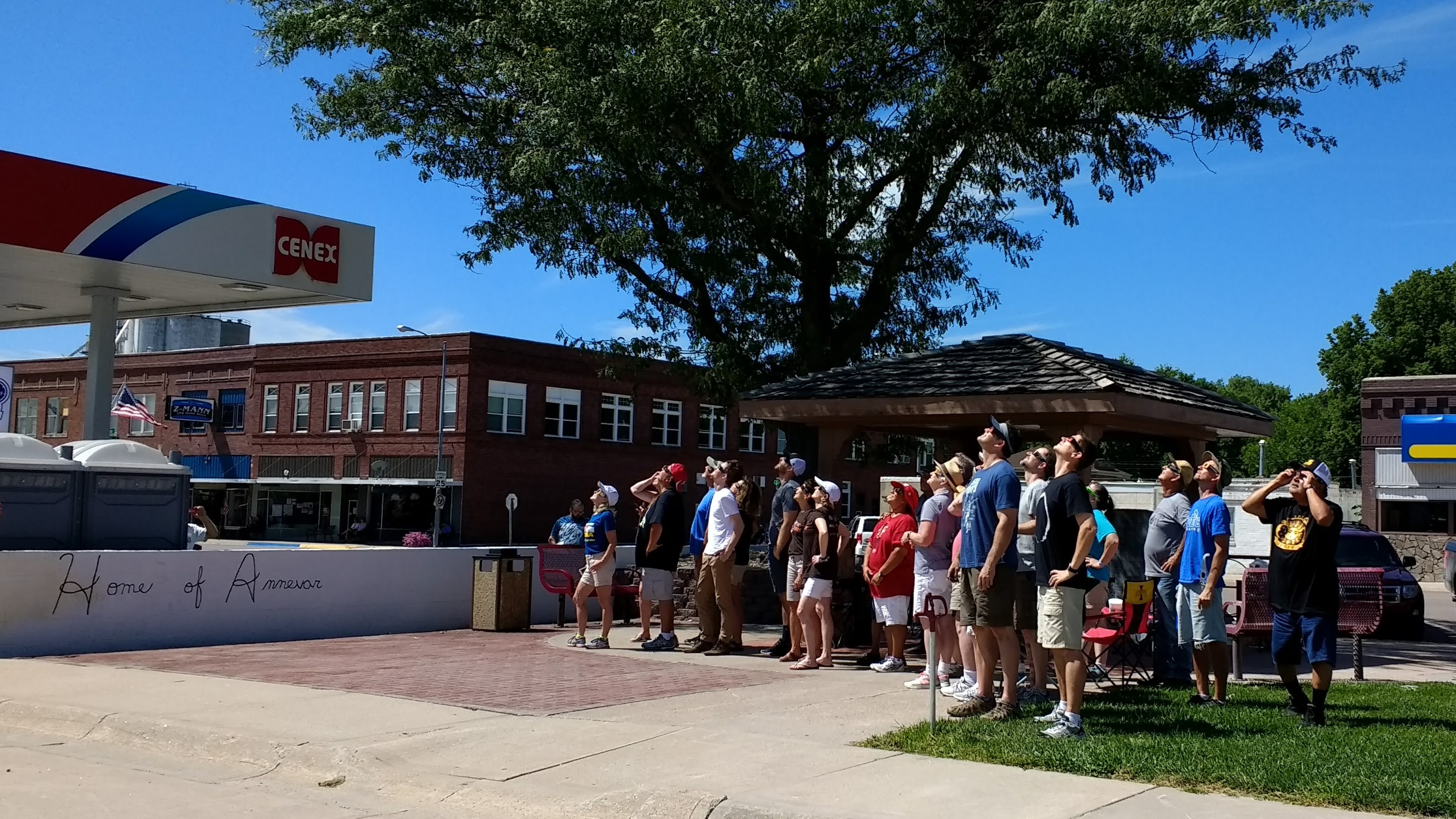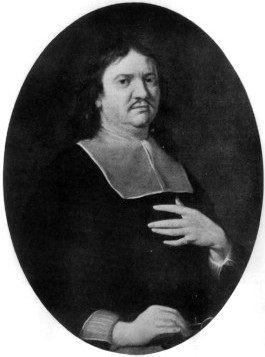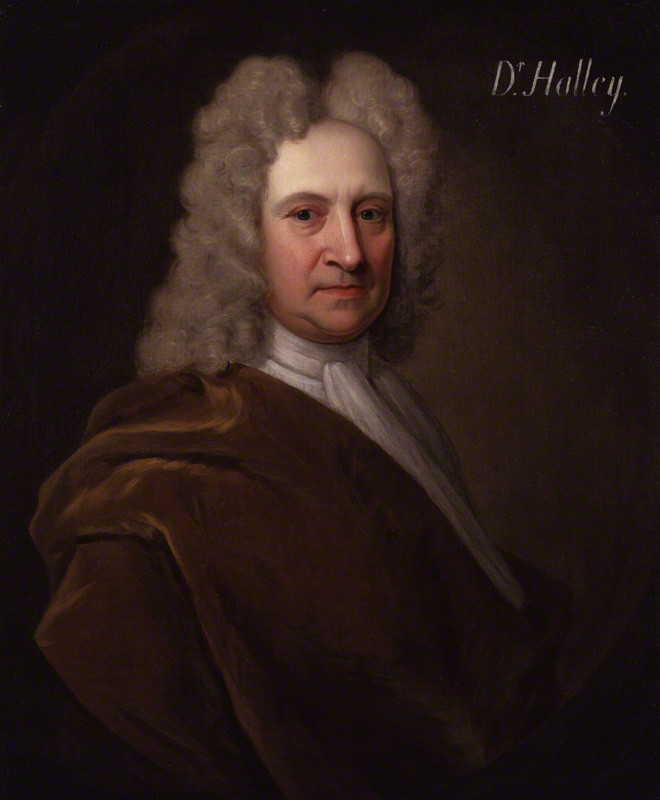|
Diamond Ring Effect
The Baily's beads effect or diamond ring effect is a feature of total and annular solar eclipses. As the Moon covers the Sun during a solar eclipse, the rugged topography of the lunar limb allows beads of sunlight to shine through in some places while not in others. The effect is named after Francis Baily, who explained the phenomenon in 1836. The diamond ring effect is seen when only one bead is left, appearing as a shining "diamond" set in a bright ring around the lunar silhouette. Lunar topography has considerable relief because of the presence of mountains, craters, valleys, and other topographical features. The irregularities of the lunar limb profile (the "edge" of the Moon, as seen from a distance) are known accurately from observations of grazing occultations of stars. Astronomers thus have a fairly good idea which mountains and valleys will cause the beads to appear in advance of the eclipse. While Baily's beads are seen briefly for a few seconds at the center of the ... [...More Info...] [...Related Items...] OR: [Wikipedia] [Google] [Baidu] |
Solar Eclipse Of August 21, 2017
The solar eclipse of August 21, 2017, dubbed the "Great American Eclipse" by the media, was a total solar eclipse visible within a band that spanned the contiguous United States from the Pacific to the Atlantic coasts. It was also visible as a partial solar eclipse from as far north as Nunavut in northern Canada to as far south as northern South America. In northwestern Europe and Africa, it was partially visible in the late evening. In northeastern Asia, it was partially visible at sunrise. Prior to this event, no solar eclipse had been visible across the entirety of the United States since June 8, 1918; not since the February 1979 eclipse had a total eclipse been visible from anywhere in the mainland United States. The path of totality touched 14 states, and the rest of the U.S. had a partial eclipse. The area of the path of totality was about 16 percent of the area of the United States, with most of this area over the ocean, not land. The event's shadow began to cover l ... [...More Info...] [...Related Items...] OR: [Wikipedia] [Google] [Baidu] |
Photosphere
The photosphere is a star's outer shell from which light is radiated. The term itself is derived from Ancient Greek roots, φῶς, φωτός/''phos, photos'' meaning "light" and σφαῖρα/''sphaira'' meaning "sphere", in reference to it being a spherical surface that is perceived to emit light. It extends into a star's surface until the plasma becomes opaque, equivalent to an optical depth of approximately , or equivalently, a depth from which 50% of light will escape without being scattered. A photosphere is the deepest region of a luminous object, usually a star, that is transparent to photons of certain wavelengths. Temperature The surface of a star is defined to have a temperature given by the effective temperature in the Stefan–Boltzmann law. Stars, except neutron stars, have no solid or liquid surface. Therefore, the photosphere is typically used to describe the Sun's or another star's visual surface. Composition of the Sun The Sun is composed primari ... [...More Info...] [...Related Items...] OR: [Wikipedia] [Google] [Baidu] |
Ravenna, Nebraska
Ravenna is a city in Buffalo County, Nebraska, United States. It is part of the Kearney, Nebraska Micropolitan Statistical Area. The population was 1,441 at the 2020 census. History Ravenna was founded in 1886 when the Burlington Railroad was extended to that point. It was named after the city of Ravenna, Italy, and many of Ravenna's street names commemorate other Italian places. Ravenna was incorporated in October 1886. Geography Ravenna is located at (41.027700, -98.913347). According to the United States Census Bureau, the city has a total area of , of which is land and is water. Climate Demographics 2010 census As of the census of 2010, there were 1,360 people, 575 households, and 338 families living in the city. The population density was . There were 660 housing units at an average density of . The racial makeup of the city was 98.2% White, 0.2% Native American, 0.4% Asian, and 1.3% from two or more races. Hispanic or Latino of any race were 2.0% of the popul ... [...More Info...] [...Related Items...] OR: [Wikipedia] [Google] [Baidu] |
Voyager
Voyager may refer to: Science and Astronomy * Voyager 1 – a space probe launched by NASA September 5, 1977 as part of the Voyager program. * Voyager 2 – a space probe launched by NASA on August 20, 1977. Computing and communications * LG Voyager, a mobile phone model manufactured by LG Electronics * NCR Voyager, a computer platform produced by NCR Corporation * Voyager (computer worm), a computer worm affecting Oracle databases * Voyager (library program), the integrated library system from Ex Libris Group * Voyager (web browser), a web browser for Amiga computers * HP Voyager series, code name for the Hewlett-Packard series of handheld programmable calculators including the HP-10C/11C/12C/15C/16C Transport Air * Airbus Voyager, Royal Air Force version of the Airbus A330 MRTT * Frequent flyer program of South African Airways * Egvoyager Voyager 203, an Italian ultralight aircraft * Raj Hamsa Voyager, an Indian ultralight trike design * Rutan Voyager, the first airplane ... [...More Info...] [...Related Items...] OR: [Wikipedia] [Google] [Baidu] |
Heroes (U
Heroes or Héroes may refer to: * Hero, one who displays courage and self-sacrifice for the greater good Film * ''Heroes'' (1977 film), an American drama * ''Heroes'' (2008 film), an Indian Hindi film Gaming * '' Heroes of Might and Magic'' or ''Heroes'', a series of video games *''Heroes of the Storm'' or ''Heroes,'' a 2015 video game * ''Heroes'' (role-playing game) (1979) * '' Heros: The Sanguine Seven'', a 1993 video game * '' Sonic Heroes'', a 2003 video game in the ''Sonic the Hedgehog'' franchise Literature * ''Heroes'' (book series), short novels and plays intended for young boys * ''Heroes'' (comics), a 1996 comic book by DC Comics * ''Heroes'' (novel), a 1998 novel by Robert Cormier * ''Heroes'' (play), a translation by Tom Stoppard of ''Le Vent Des Peupliers'' by Gérald Sibleyras * '' Heroes: Saving Charlie'', a 2007 novel based on the American TV series ''Heroes'' * ''Heroes'', a role-playing game magazine by Avalon Hill * ''Heroes'', a 2018 collection ... [...More Info...] [...Related Items...] OR: [Wikipedia] [Google] [Baidu] |
Cosmas Damian Asam
Cosmas Damian Asam (29 September 1686 – 10 May 1739) was a German painter and architect during the late Baroque period. Born in Benediktbeuern, he lived in Rome from 1711 to 1713 to study at the Accademia di San Luca with Carlo Maratta. In 1713, Asam won the Academy's first prize for his drawing of ''Miracle of Saint Pio''. In Germany, he worked with his brother Egid Quirin, a sculptor and stucco worker, on building and decorating entirely new churches (such as the Asam Church in Munich) or redesigning churches in the Baroque style ( Regensburg— Benedictine Monastery Church of St. Emmeram). Their joint projects are often attributed to the "Asam Brothers". Cosmas Damian died in Munich. Major works The Asam Brothers, singularly and together, were very prolific artists. They typically worked for Benedictine monasteries, though they occasionally took secular commissions. Cosmas Damian's altar depicting The Vision of St. Benedict in Weltenburg— Monastery Ch ... [...More Info...] [...Related Items...] OR: [Wikipedia] [Google] [Baidu] |
Scottish Borders
The Scottish Borders ( sco, the Mairches, 'the Marches'; gd, Crìochan na h-Alba) is one of 32 council areas of Scotland. It borders the City of Edinburgh, Dumfries and Galloway, East Lothian, Midlothian, South Lanarkshire, West Lothian and, to the south-west, south and east, the English counties of Cumbria and Northumberland. The administrative centre of the area is Newtown St Boswells. The term Scottish Borders, or normally just "the Borders", is also used to designate the areas of southern Scotland and northern England that bound the Anglo-Scottish border. Geography The Scottish Borders are in the eastern part of the Southern Uplands. The region is hilly and largely rural, with the River Tweed flowing west to east through it. The highest hill in the region is Broad Law in the Manor Hills. In the east of the region, the area that borders the River Tweed is flat and is known as 'The Merse'. The Tweed and its tributaries drain the entire region with the rive ... [...More Info...] [...Related Items...] OR: [Wikipedia] [Google] [Baidu] |
Jedburgh
Jedburgh (; gd, Deadard; sco, Jeddart or ) is a town and former royal burgh in the Scottish Borders and the traditional county town of the historic county of Roxburghshire, the name of which was randomly chosen for Operation Jedburgh in support of the D-Day invasion. Location Jedburgh lies on the Jed Water, a tributary of the River Teviot. It is from the border with England, and is dominated by the substantial ruins of Jedburgh Abbey. Other notable buildings in the town include Queen Mary's House, Jedburgh Castle Jail, now a museum, and the Jedburgh Library. Other places nearby are Ancrum, Bairnkine, Bonjedward, Camptown, Crailing, Edgerston, Ferniehirst Castle, Nisbet and Oxnam. History Jedburgh began as ''Jedworð'', the "worth" or enclosed settlement on the Jed. Later the more familiar word "burgh" was substituted for this, though the original name survives as Jeddart/Jethart. Bishop Ecgred of Lindisfarne founded a church at Jedburgh in the 9th centur ... [...More Info...] [...Related Items...] OR: [Wikipedia] [Google] [Baidu] |
Philosophical Transactions Of The Royal Society
''Philosophical Transactions of the Royal Society'' is a scientific journal published by the Royal Society. In its earliest days, it was a private venture of the Royal Society's secretary. It was established in 1665, making it the first journal in the world exclusively devoted to science, and therefore also the world's longest-running scientific journal. It became an official society publication in 1752. The use of the word ''philosophical'' in the title refers to natural philosophy, which was the equivalent of what would now be generally called ''science''. Current publication In 1887 the journal expanded and divided into two separate publications, one serving the physical sciences ('' Philosophical Transactions of the Royal Society A: Mathematical, Physical and Engineering Sciences'') and the other focusing on the life sciences ('' Philosophical Transactions of the Royal Society B: Biological Sciences''). Both journals now publish themed issues and issues resulting from pa ... [...More Info...] [...Related Items...] OR: [Wikipedia] [Google] [Baidu] |
Gregorian Calendar
The Gregorian calendar is the calendar used in most parts of the world. It was introduced in October 1582 by Pope Gregory XIII as a modification of, and replacement for, the Julian calendar. The principal change was to space leap years differently so as to make the average calendar year 365.2425 days long, more closely approximating the 365.2422-day 'tropical' or 'solar' year that is determined by the Earth's revolution around the Sun. The rule for leap years is: There were two reasons to establish the Gregorian calendar. First, the Julian calendar assumed incorrectly that the average solar year is exactly 365.25 days long, an overestimate of a little under one day per century, and thus has a leap year every four years without exception. The Gregorian reform shortened the average (calendar) year by 0.0075 days to stop the drift of the calendar with respect to the equinoxes.See Wikisource English translation of the (Latin) 1582 papal bull '' Inter gravissimas''. Second ... [...More Info...] [...Related Items...] OR: [Wikipedia] [Google] [Baidu] |
Solar Eclipse Of May 3, 1715
__NOTOC__ A total solar eclipse occurred on 3 May 1715. It was known as Halley's Eclipse, after Edmond Halley (1656–1742) who predicted this eclipse to within 4 minutes accuracy. Halley observed the eclipse from London where the city of London enjoyed 3 minutes 33 seconds of totality. He also drew a predictive map showing the path of totality across the Kingdom of Great Britain. The original map was about 20 miles off the observed eclipse path, mainly due to his use of inaccurate lunar ephemeris. After the eclipse, he corrected the eclipse path, and added the path and description of the 1724 total solar eclipse. Drawing upon lunar tables made by the first Astronomer Royal John Flamsteed, William Whiston produced a more technical predictive eclipse map around the same time as Halley. Both Halley's and Whiston's maps were published by John Senex in March 1715. Totality was observed in the Kingdom of Great Britain from Cornwall in the south-west to Lincolnshire and Norfolk ... [...More Info...] [...Related Items...] OR: [Wikipedia] [Google] [Baidu] |
Edmond Halley
Edmond (or Edmund) Halley (; – ) was an English astronomer, mathematician and physicist. He was the second Astronomer Royal in Britain, succeeding John Flamsteed in 1720. From an observatory he constructed on Saint Helena in 1676–77, Halley catalogued the southern celestial hemisphere and recorded a transit of Mercury across the Sun. He realised that a similar transit of Venus could be used to determine the distances between Earth, Venus, and the Sun. Upon his return to England, he was made a fellow of the Royal Society, and with the help of King Charles II of England, Charles II, was granted a master's degree from University of Oxford, Oxford. Halley encouraged and helped fund the publication of Isaac Newton's influential ''Philosophiæ Naturalis Principia Mathematica'' (1687). From observations Halley made in September 1682, he used Newton's laws of motion to compute the periodicity of Halley's Comet in his 1705 ''Synopsis of the Astronomy of Comets''. It was named afte ... [...More Info...] [...Related Items...] OR: [Wikipedia] [Google] [Baidu] |






